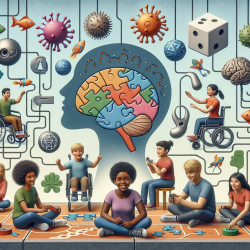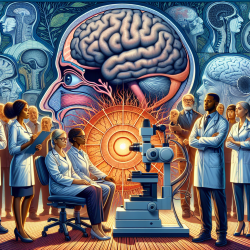Introduction
In the realm of speech-language pathology and mental health, innovative approaches are constantly being sought to improve therapeutic outcomes for children. A recent study titled Efficacy and mechanisms underlying a gamified attention bias modification training in anxious youth: protocol for a randomized controlled trial provides compelling insights into enhancing therapy for anxious youth through gamified Attention Bias Modification Training (ABMT).
Understanding the Study
This study explores the efficacy of an enhanced ABMT integrated with Cognitive Behavioral Therapy (CBT) for treating anxiety disorders in youth. The enhanced ABMT employs a gamified approach combining the modified dot-probe task with a visual search task, aiming to address attentional biases towards threats. This innovative method is designed to improve engagement and adherence, crucial factors in therapy success.
Key Findings and Implications
The study highlights several important findings:
- Enhanced Engagement: The gamified elements in ABMT, such as point systems and engaging tasks, significantly increase motivation and adherence among young participants.
- Neurobiological Insights: The study replicates findings that aberrant amygdala connectivity is a neurobiological marker of attentional bias towards threats. This connectivity also mediates the effects of ABMT.
- Improved Outcomes with CBT: When combined with CBT, the enhanced ABMT shows potential for greater improvements in anxiety symptoms, as measured by the Pediatric Anxiety Rating Scale (PARS) and Clinical Global Impressions-Improvement Scale (CGI-I).
Practical Applications for Practitioners
Practitioners can leverage these findings to enhance their therapeutic approaches. Here are some practical steps:
- Incorporate Gamification: Utilize gamified elements in therapy sessions to boost engagement and adherence. This can be particularly effective for younger children who may find traditional therapy methods less engaging.
- Focus on Neurobiology: Understanding the role of amygdala connectivity can help tailor interventions that specifically target attentional biases, potentially leading to more personalized treatment plans.
- Combine with CBT: Integrating ABMT with CBT could enhance overall treatment efficacy, providing a more comprehensive approach to managing anxiety in youth.
Encouraging Further Research
While the study offers promising insights, it also highlights the need for further research to refine these methods and explore additional applications. Practitioners are encouraged to stay informed about ongoing research in this area and consider participating in studies to contribute to the growing body of knowledge.
To read the original research paper, please follow this link: Efficacy and mechanisms underlying a gamified attention bias modification training in anxious youth: protocol for a randomized controlled trial.










